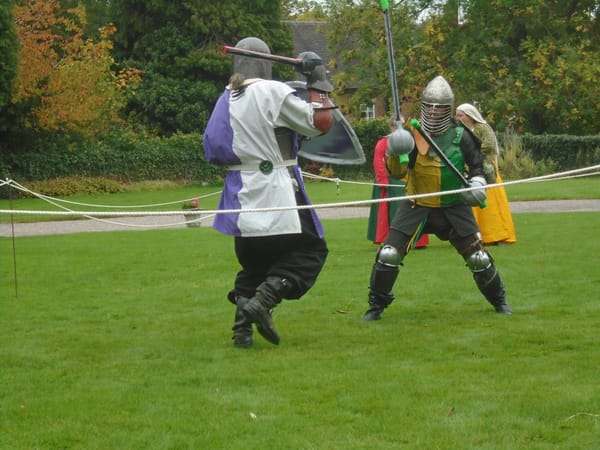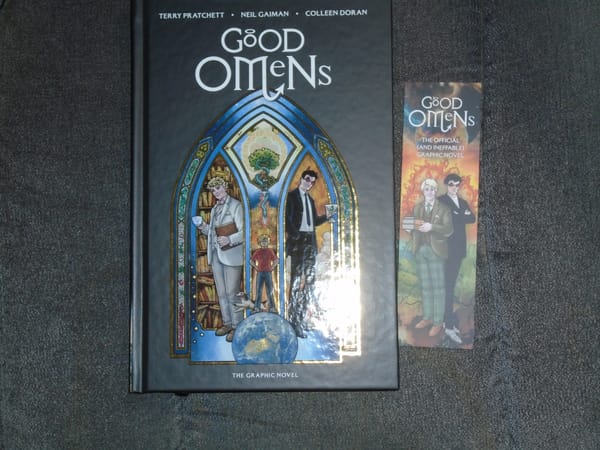Supersize me

I've already dealt with the technical problems of doing fine gauge netting; but what I didn't initially realise was that very large pieces have their own, quite different, set of problems.
I think I've already said I am making nets for the stage production of the play (which is, apparently, going to be premiered as part of the official opening celebrations for our new community centre... the one that is still being built, and should really have been finished more than five years ago). Obviously, for nets that are going to be stage props helping to indicate that this is a ship (a pirate ship, indeed), you do not want them small. If they're too big, you can always drape them artistically into the space you have available, but there's not much to be done if they're too small. So I decided that 2.5 metres square was about right for one of these nets, since by my (fairly rough) reckoning that should take about a kilo of twine, and I have two kilos, so I can make two of these nets. If the first one ends up taking a little more than a kilo, I can make the second one a little smaller; it's not essential that they should be exactly the same size. But they should both be around that kind of measurement.
I hadn't quite got my head round just how bulky and cumbersome a net that size is. At the point of writing this, I'm a bit more than halfway through the first net, maybe nearly two thirds of the way (it's difficult to get a decent rough estimate when working diagonally), and it is already really awkward. Most of the time I'm doing the standard thing that you do to anchor longer nets, which is to weave a loop of twine through it (I use a different colour so that it's easy to see) at a convenient level along the length, then hook that onto your anchor point. This works well, but you do get a longer and longer overhang of completed net which has to go somewhere, usually all over the floor. I took it to the last drama group meeting with me, partly because I knew I wouldn't be reading all the time, and partly because I thought the group would be interested to see how it was done (they were); however, on that occasion I made a serious error. I thought I could just do what I did last time I took it to the drama group (when there were only a few people), which was to hook it up to a table leg and just drive my mobility scooter backwards till it was at a suitable distance to keep the netting at the right tension.
Unfortunately, the netting was now a lot longer than it had been the previous week; I'm inclined to pick up my netting when things get stressful, which they had been doing, so I had done a lot of it. A metre and a half or so of square-mesh netting is manageable if anchored at the start point. Two and a half metres (a little more, in fact) is not really. It's heavy, it puts quite a strain on your hands, and because the weight isn't distributed evenly it pulls the loops at the edges sideways, so the knot is not just naturally forming in the centre of the loop. You have to yank on it to even it out, which slows the process down considerably (because you end up doing that for more than half the meshes). I was quite relieved to get it home and back on the netting frame again, where the overhang is certainly unwieldy but nothing is pulling. And, of course, by the time it's finished it'll be five metres long until I straighten it out, because the length of square-mesh netting while being worked is the sum of the two side lengths; since this is a square, that's just twice the side length. It works out at about 160 gsm, give or take, which technically makes it a "heavy fabric", even though it's mostly air... and after wrangling it at the drama group meeting, I can definitely relate to that. If I ever decide to weave with this twine, I'm going to get rug canvas.
As for the play itself, we're still very much at the readthrough stage; I am having to tell people (very nicely, but nonetheless again) that if they see a word in italics which is not a stage direction, they need to emphasise it. That's what italics are for. (At least, it's one of the things they are for, and the only one that really matters in this context.) I felt bad about doing that until I realised it's actually a cultural thing; for this season, at least, I'm one of only two people in the group who were born here. Our organiser is Swedish, but she's also half Ukrainian, so her first language is Russian; everyone else is from different parts of India, so their first languages are Malayalam, Telugu, Hindi, and possibly a few others. And all these languages have beautiful scripts, but they do not have italics; so, obviously, they were never taught how to use them at school, and it's probably not the first thing that comes to mind when teaching English as a second language. So now I feel a great deal less bad, because I'm not reminding them of something they really ought to know but don't. I'm teaching them something useful about written English. I've also been fielding a number of other questions, such as "what's a bosun?" and "how do you pronounce this word?" (the word in question being "provender" - most of them weren't sure what it meant, and I had to tell them it was a bit old-fashioned, but these were, after all, historical pirates on a sailing ship, so they needed to sound a bit old-fashioned). They're getting a feel for the story, quite slowly at the moment, but I think once they get going they'll be great; they're enjoying it, anyway, and that's the main thing.
And I, meanwhile, am enjoying making the nets... which is just as well, really!




